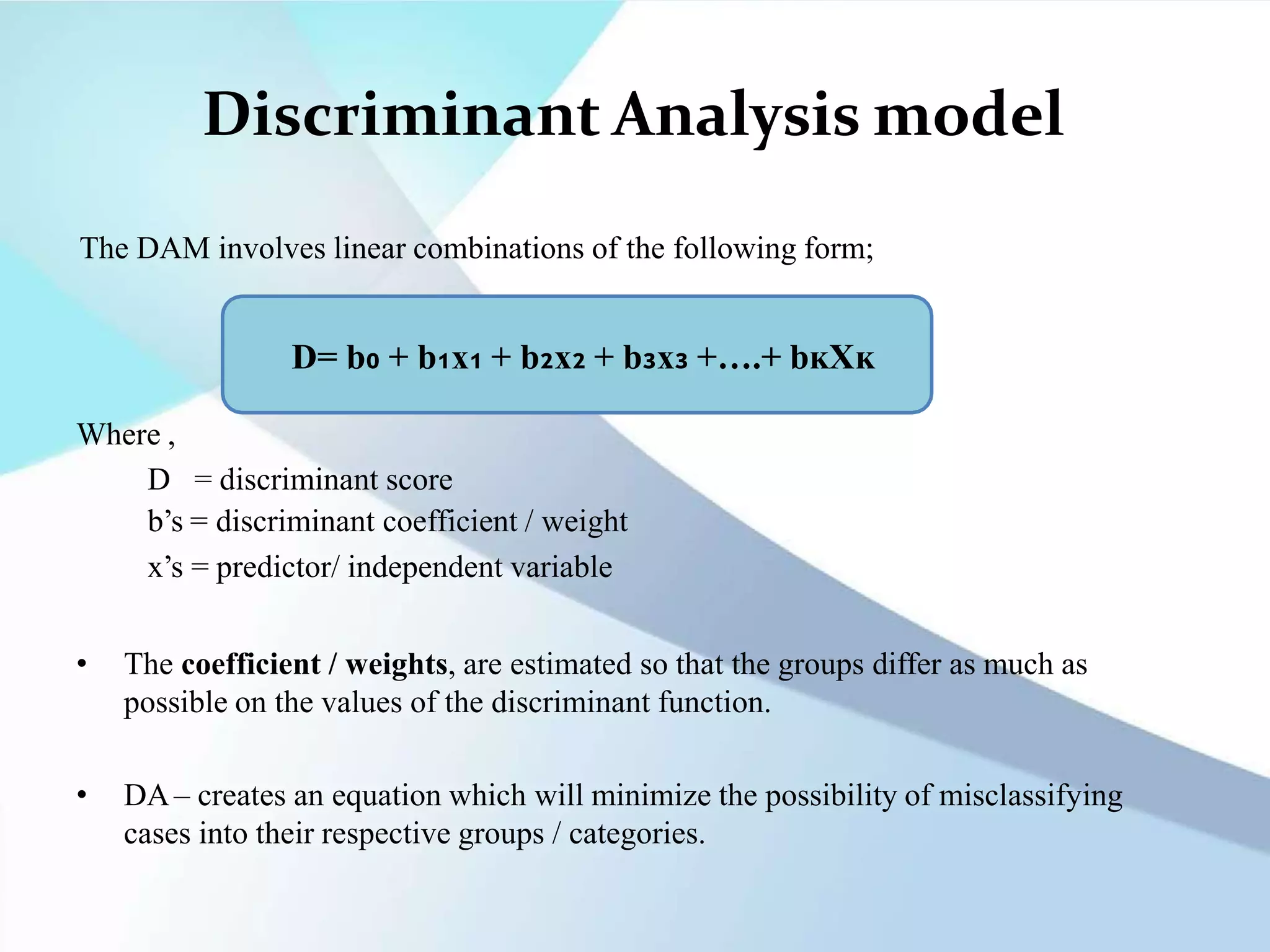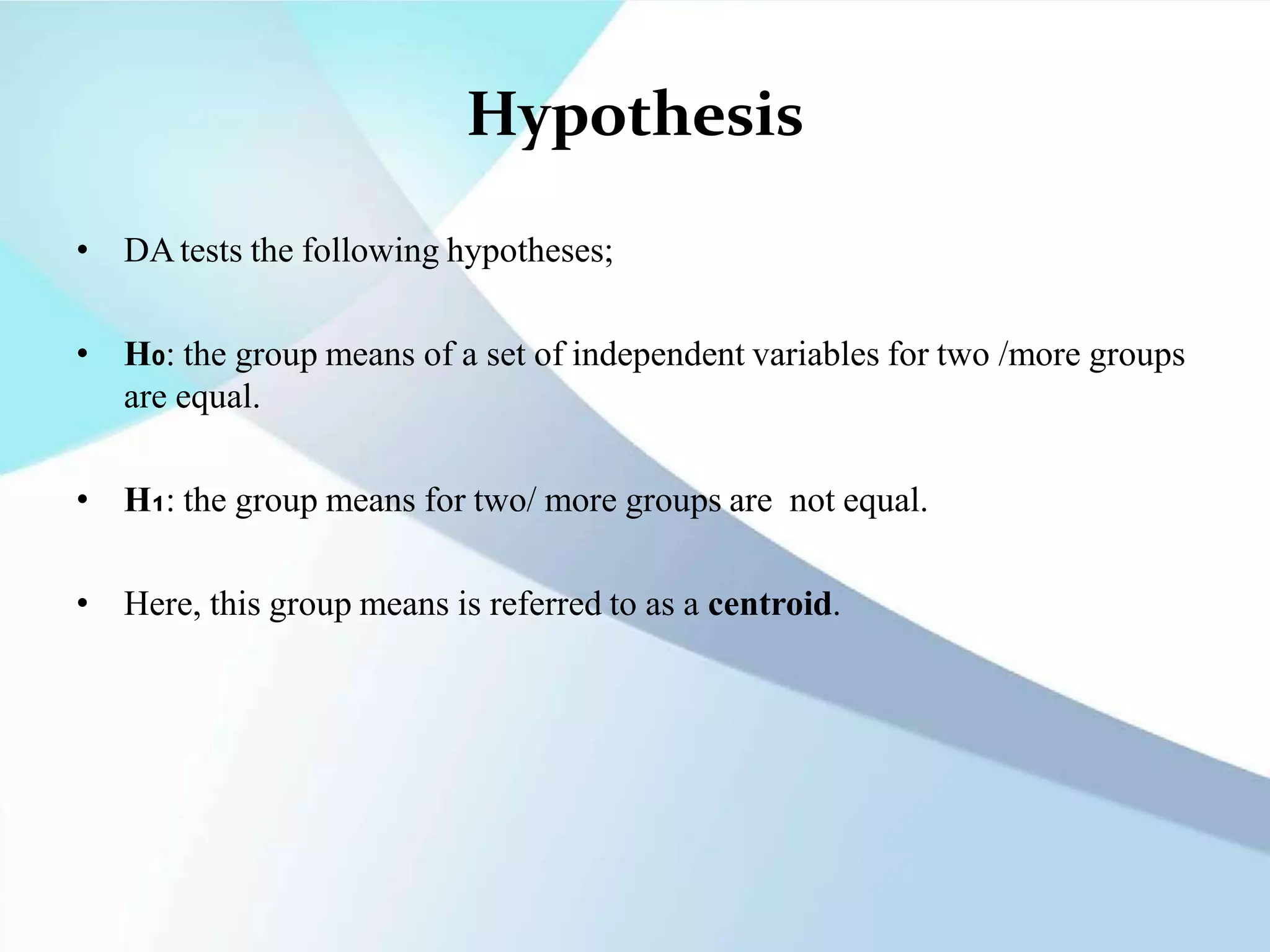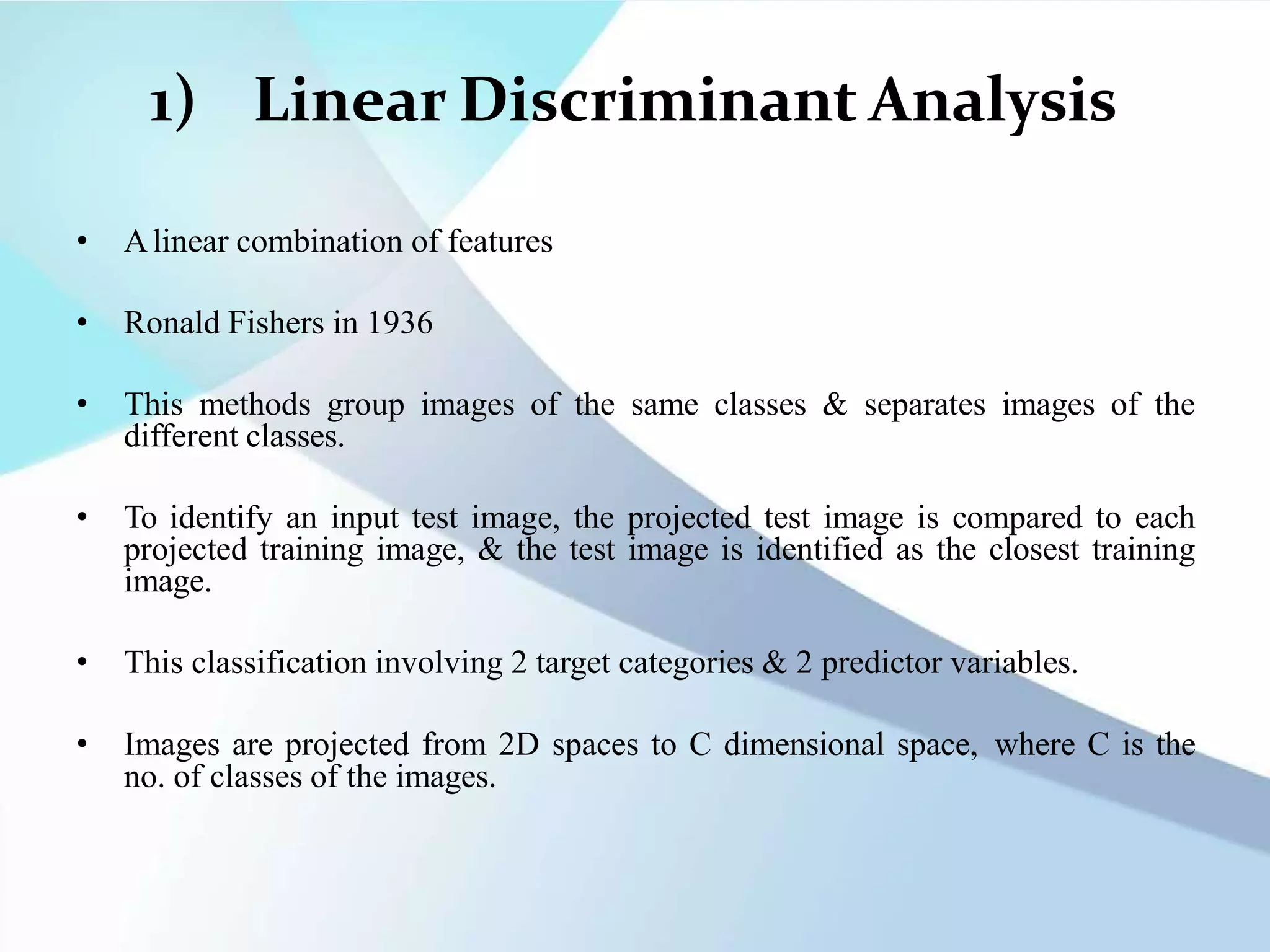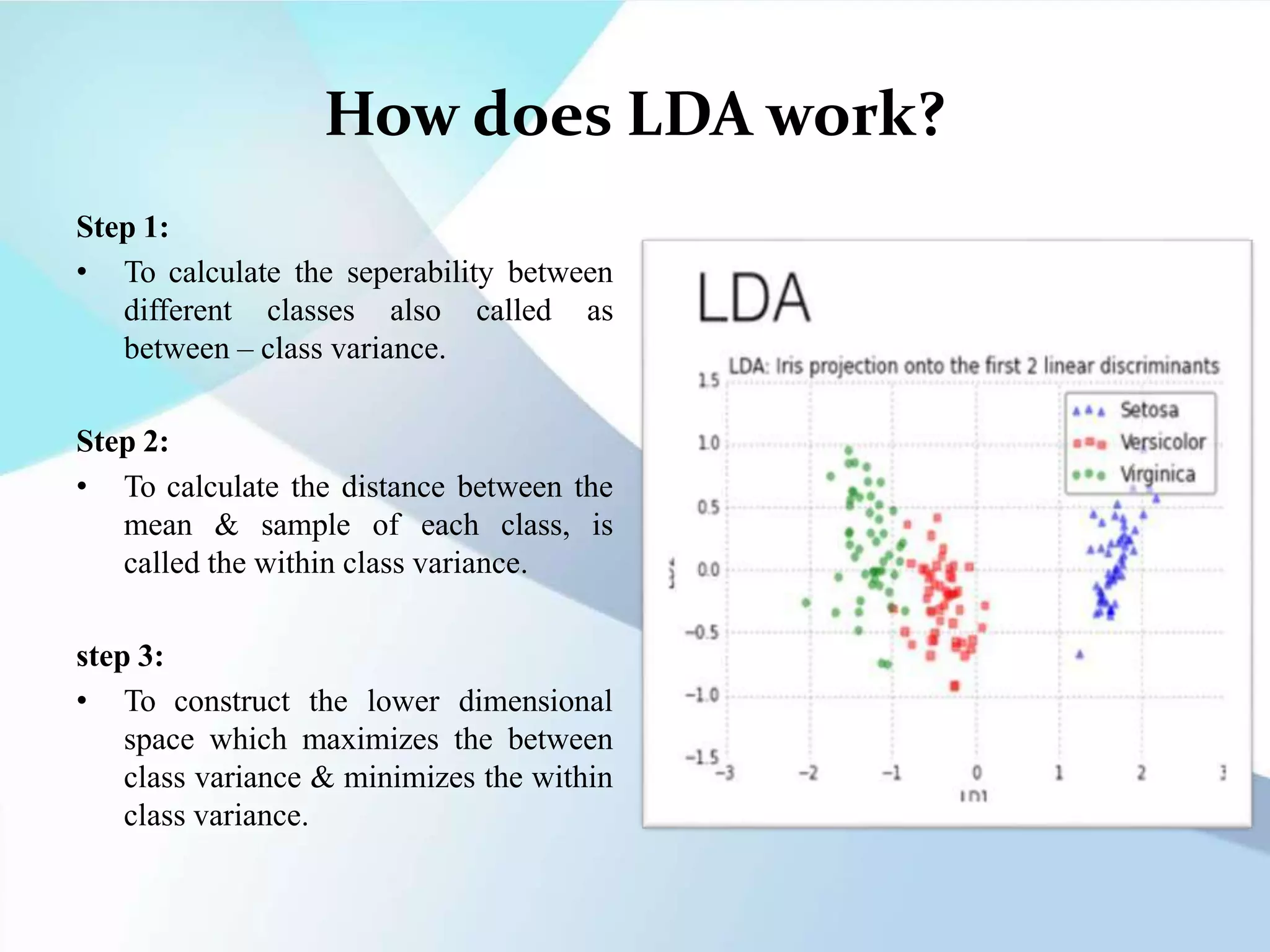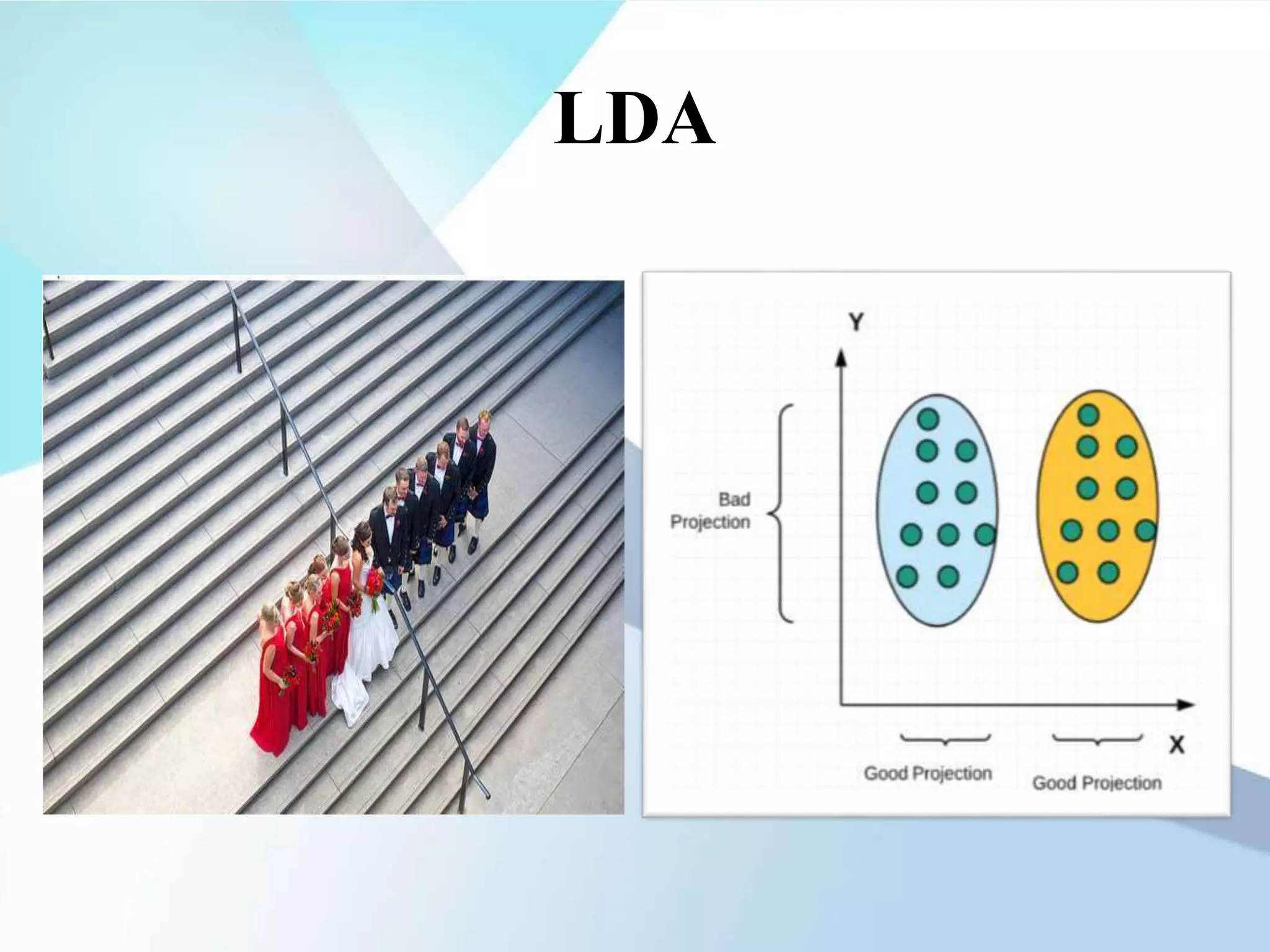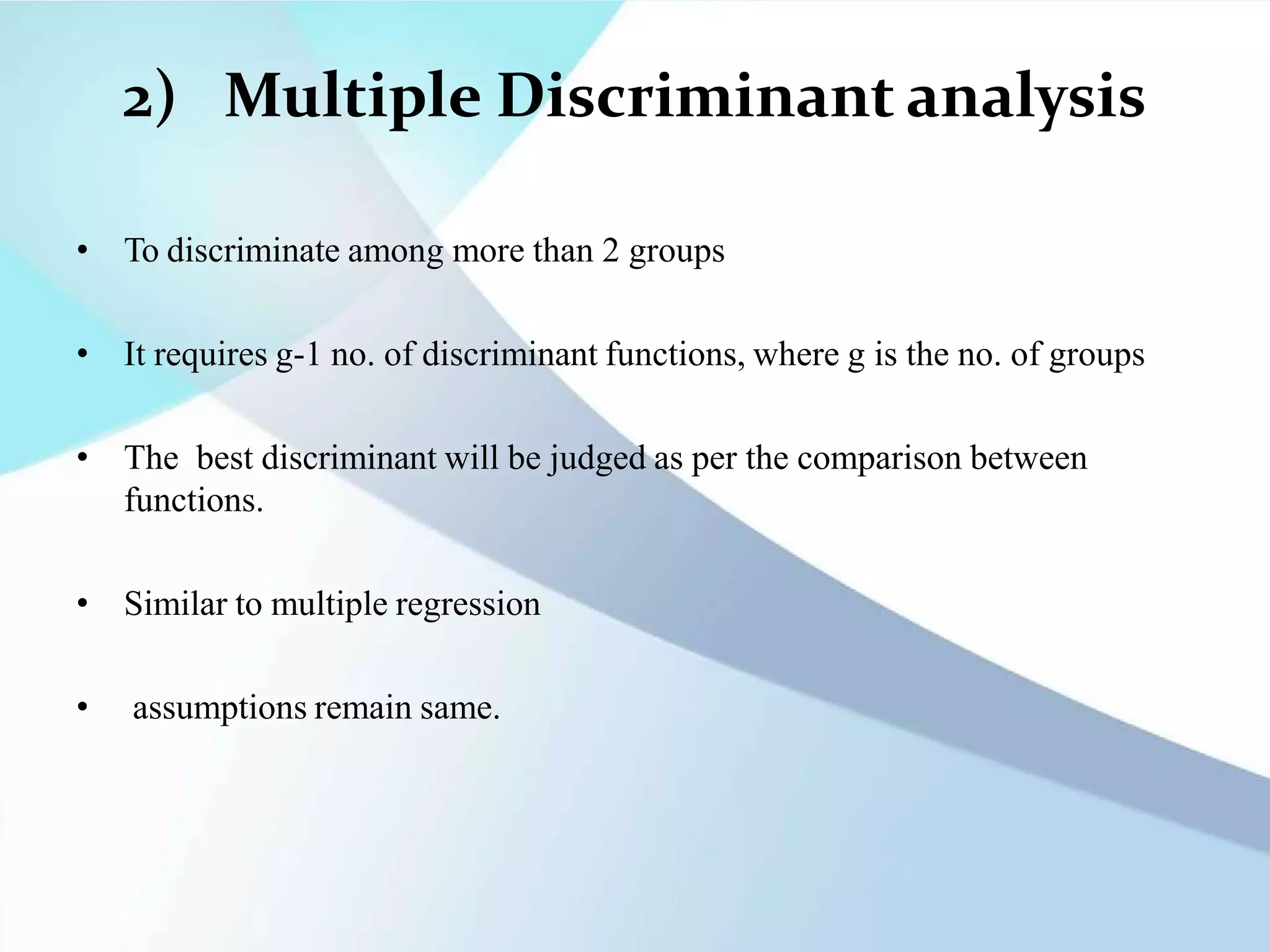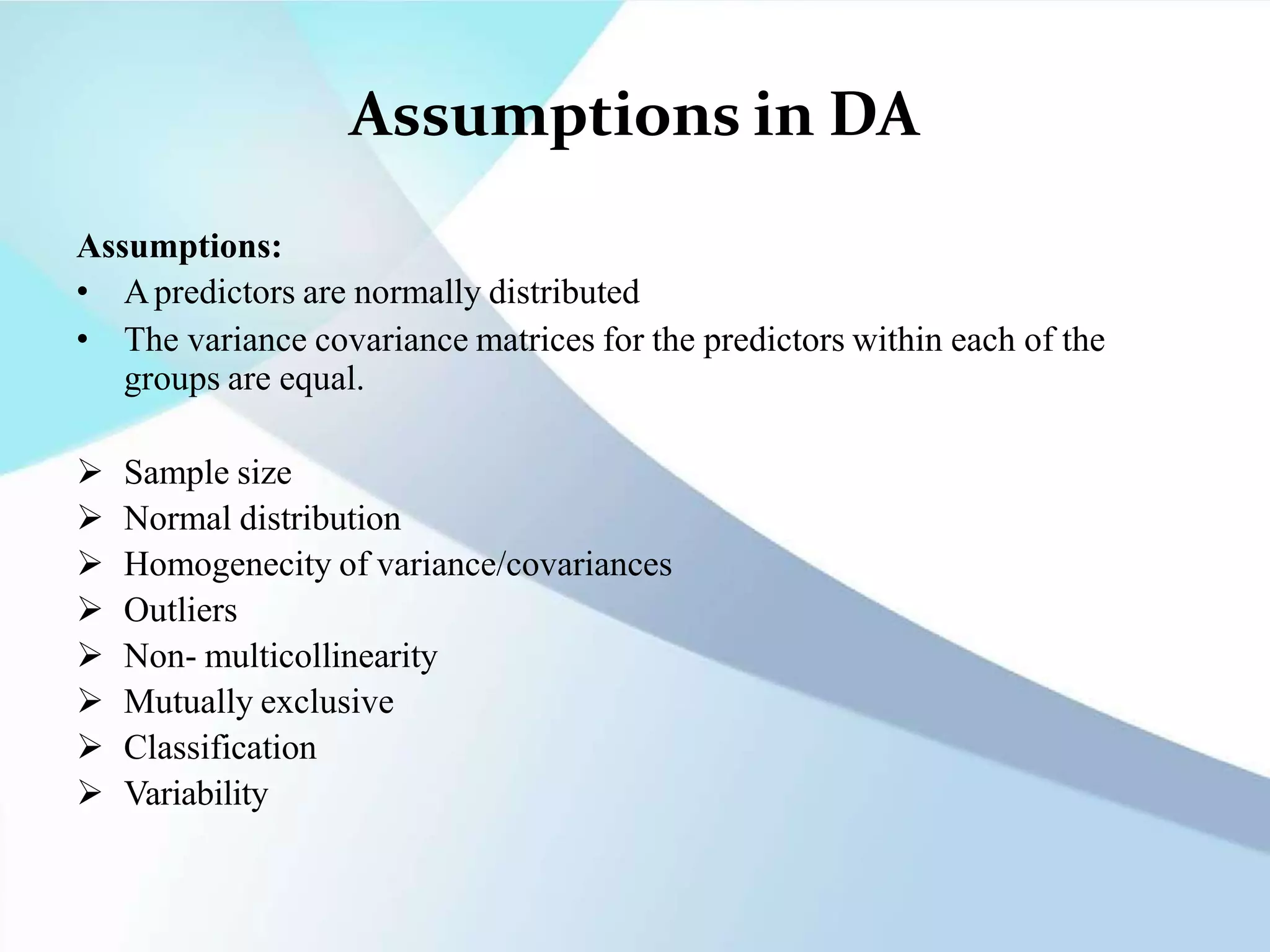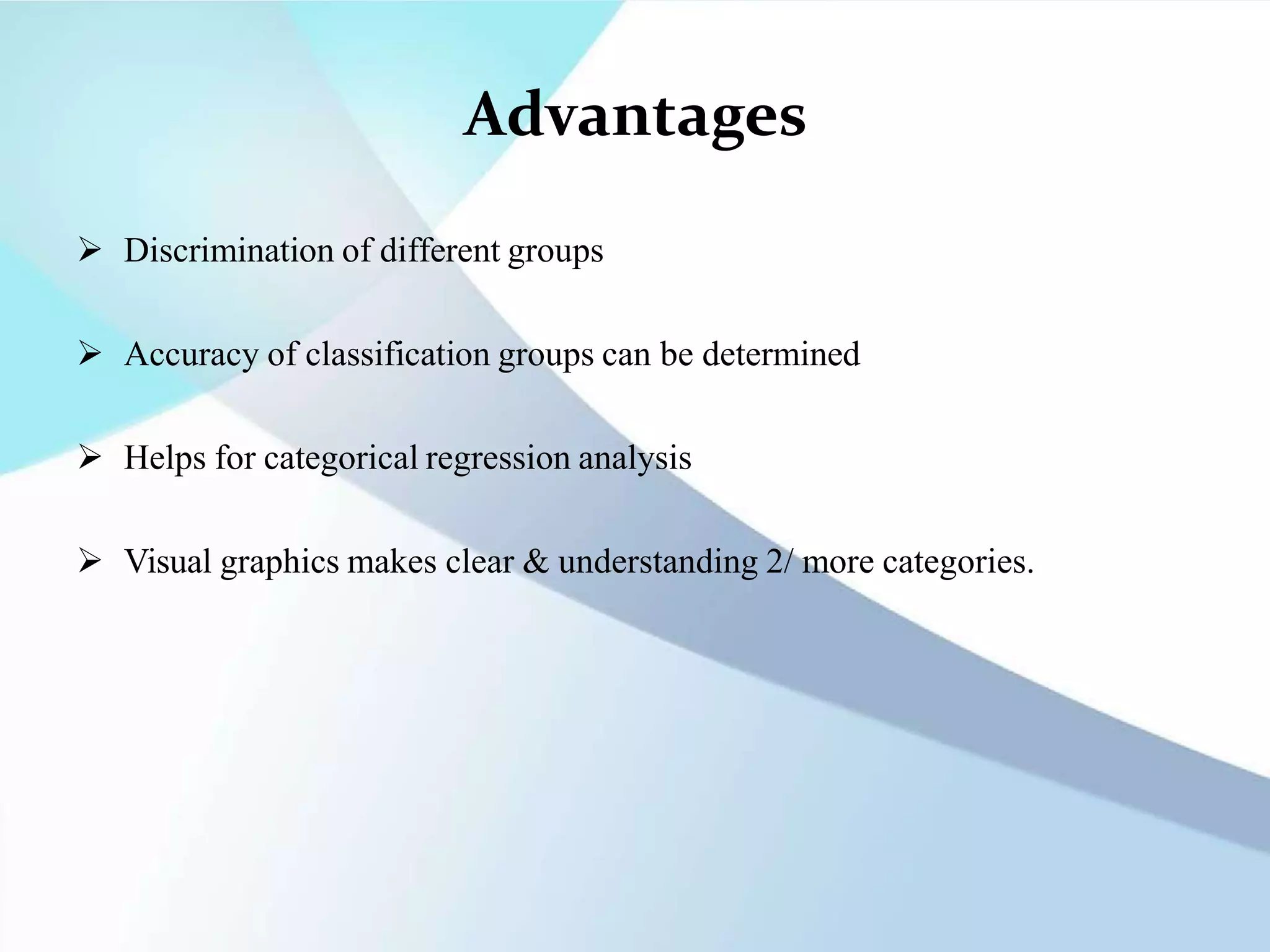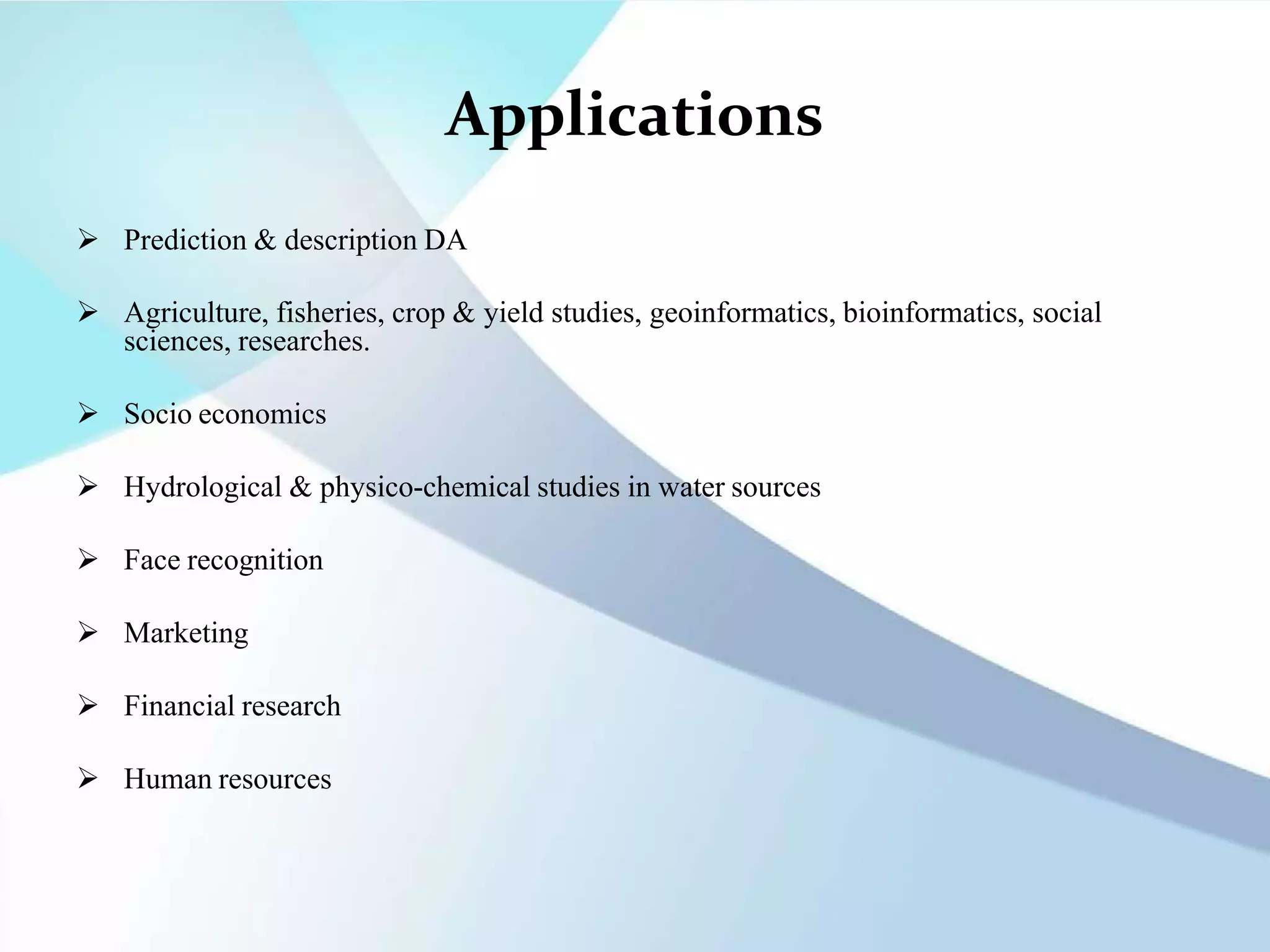Discriminant function analysis (DFA) is a statistical technique used to determine which variables are best at predicting group membership. It creates linear combinations of predictor variables called discriminant functions that discriminate between categories of a dependent variable. DFA is similar to regression and ANOVA. It works by maximizing between-group differences and minimizing within-group differences to classify cases into groups based on predictor variables. The assumptions of DFA include normally distributed predictors and equal variance-covariance matrices within groups.

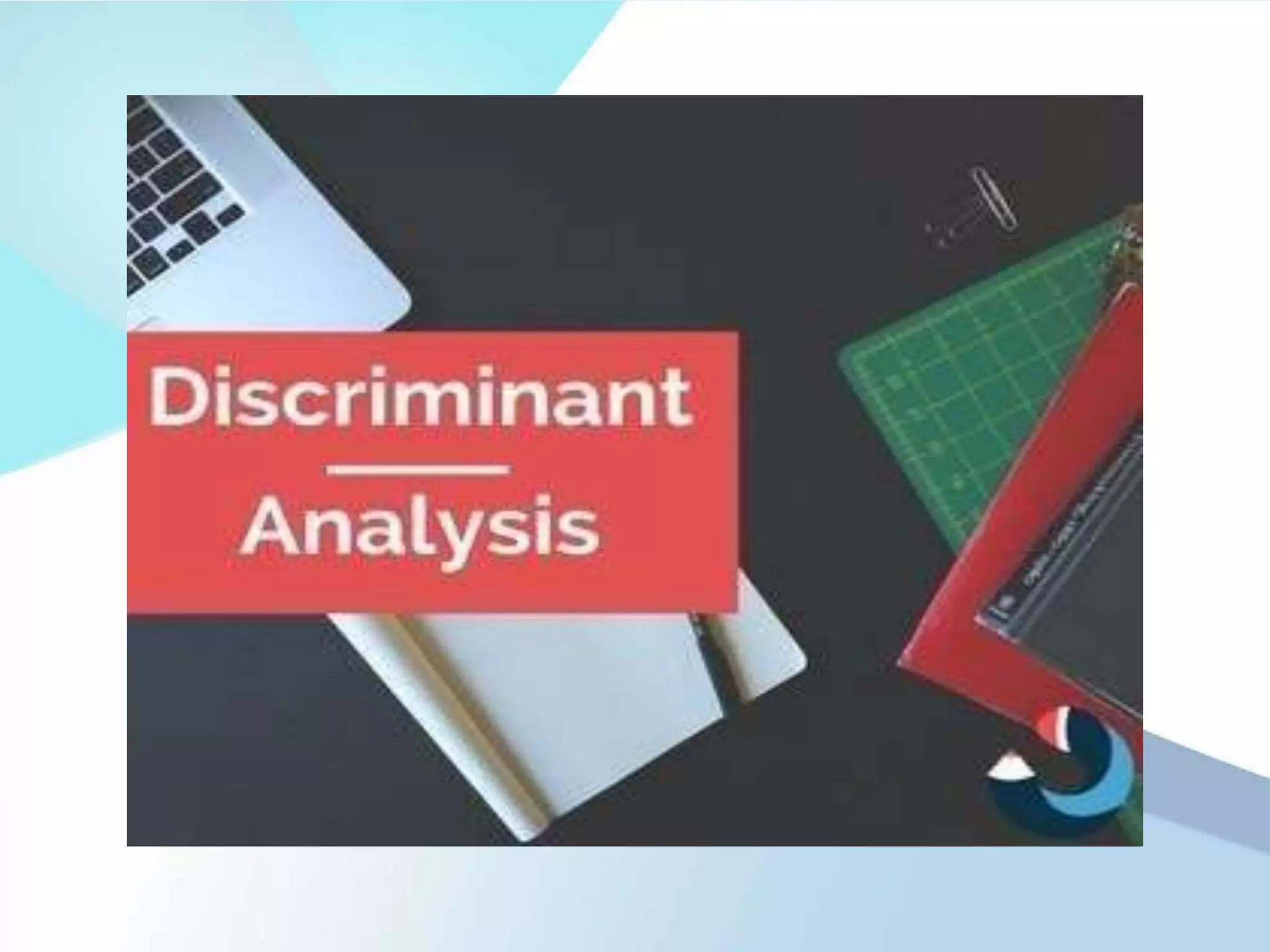
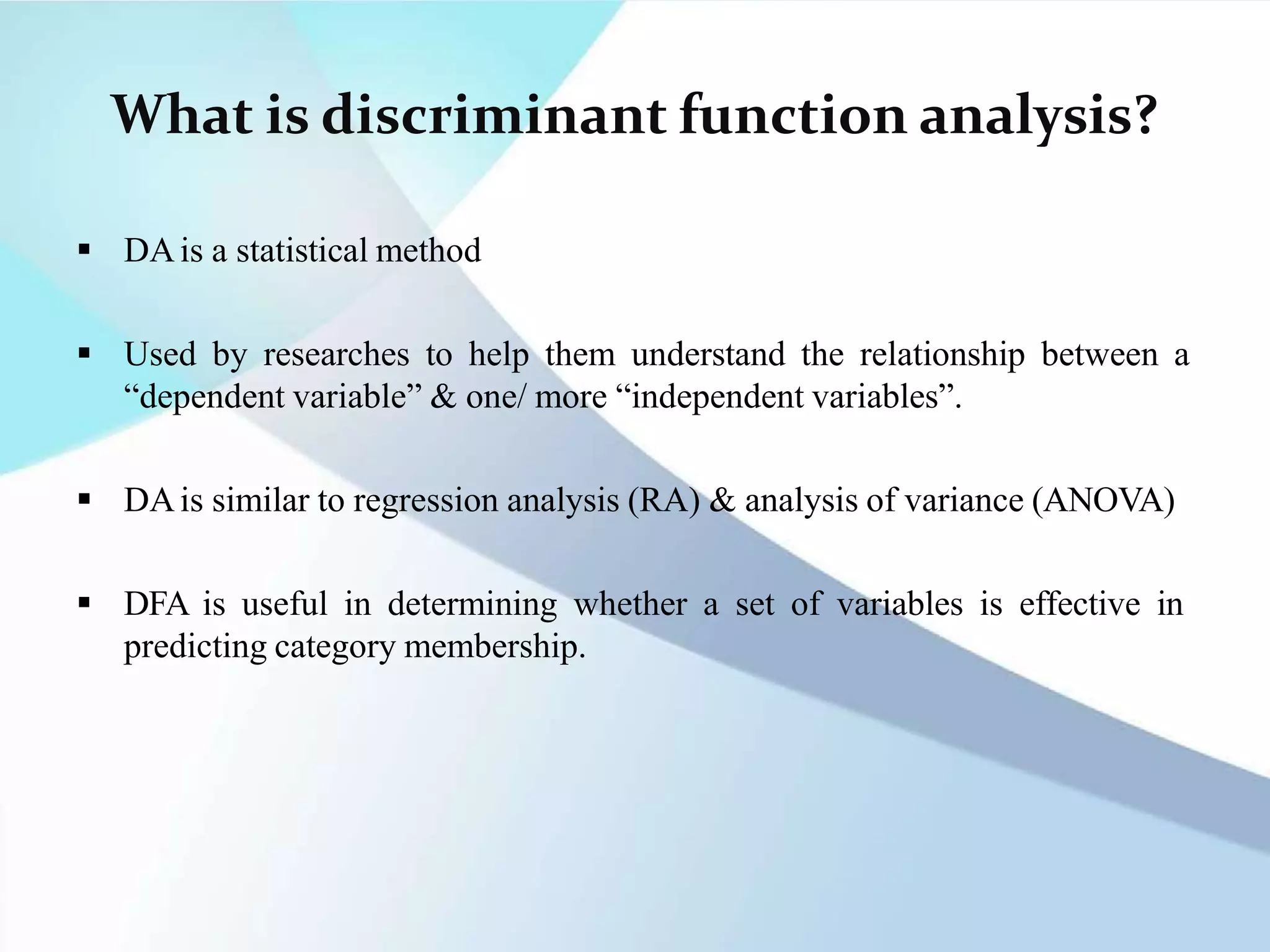

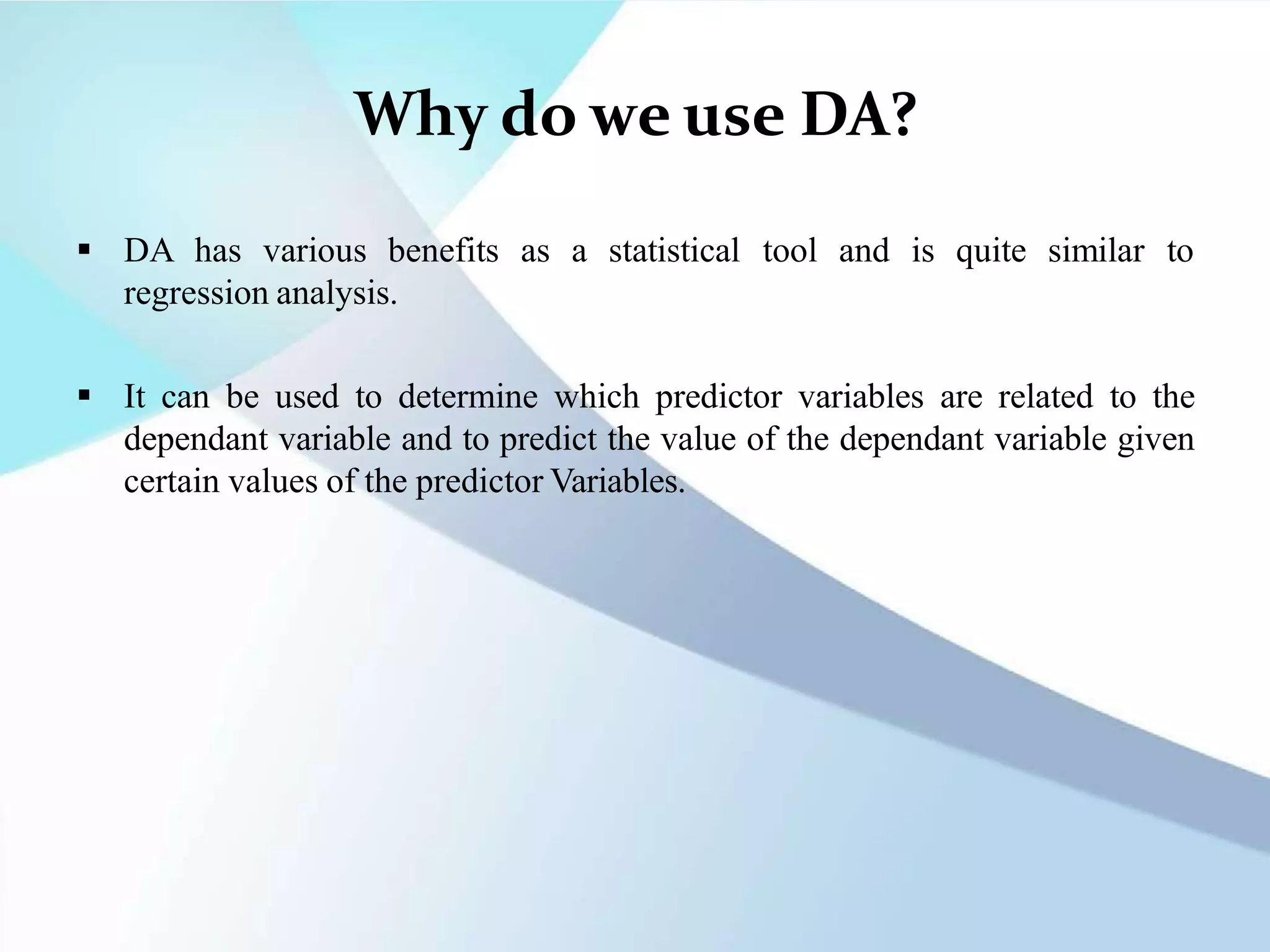
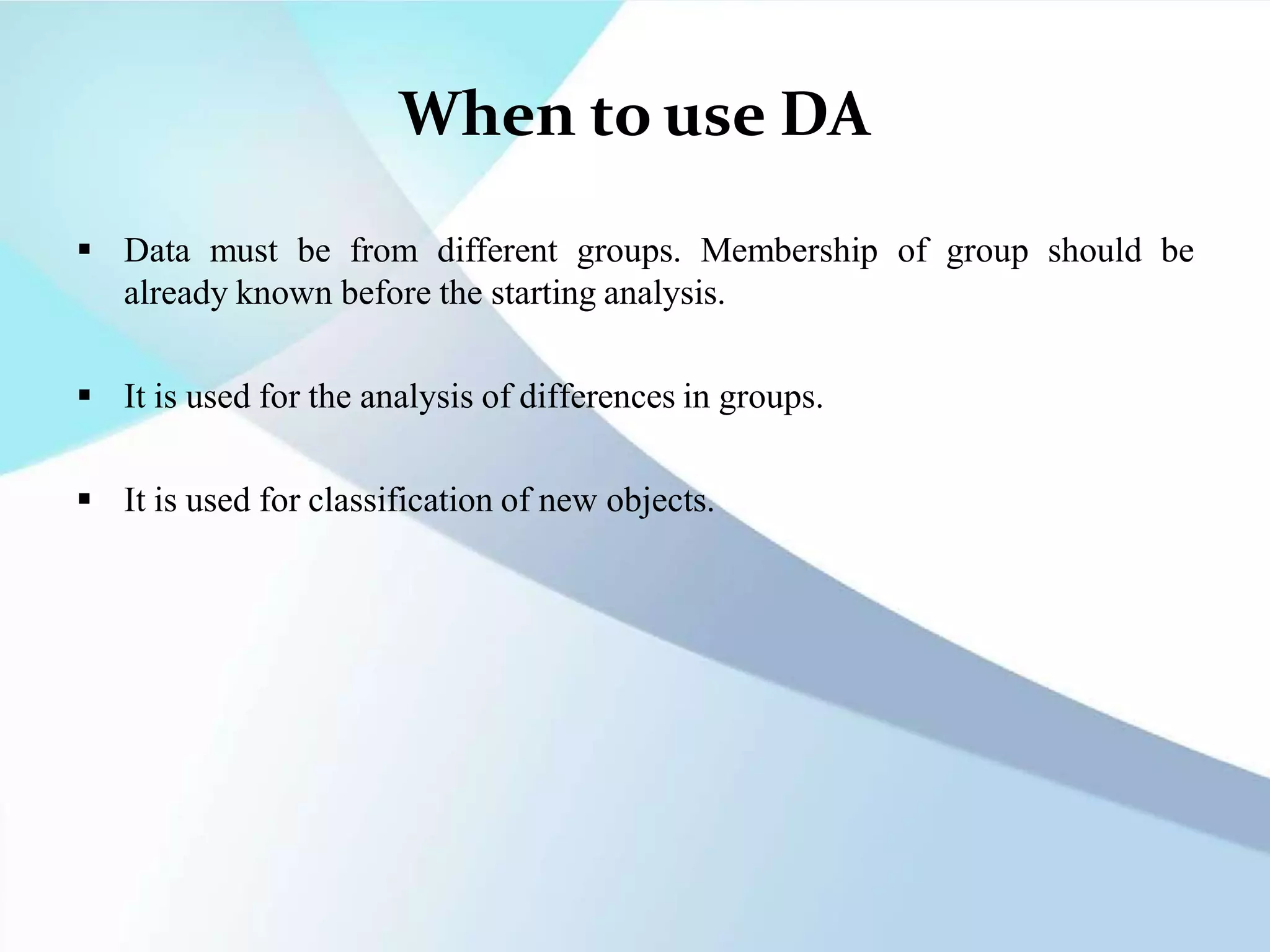
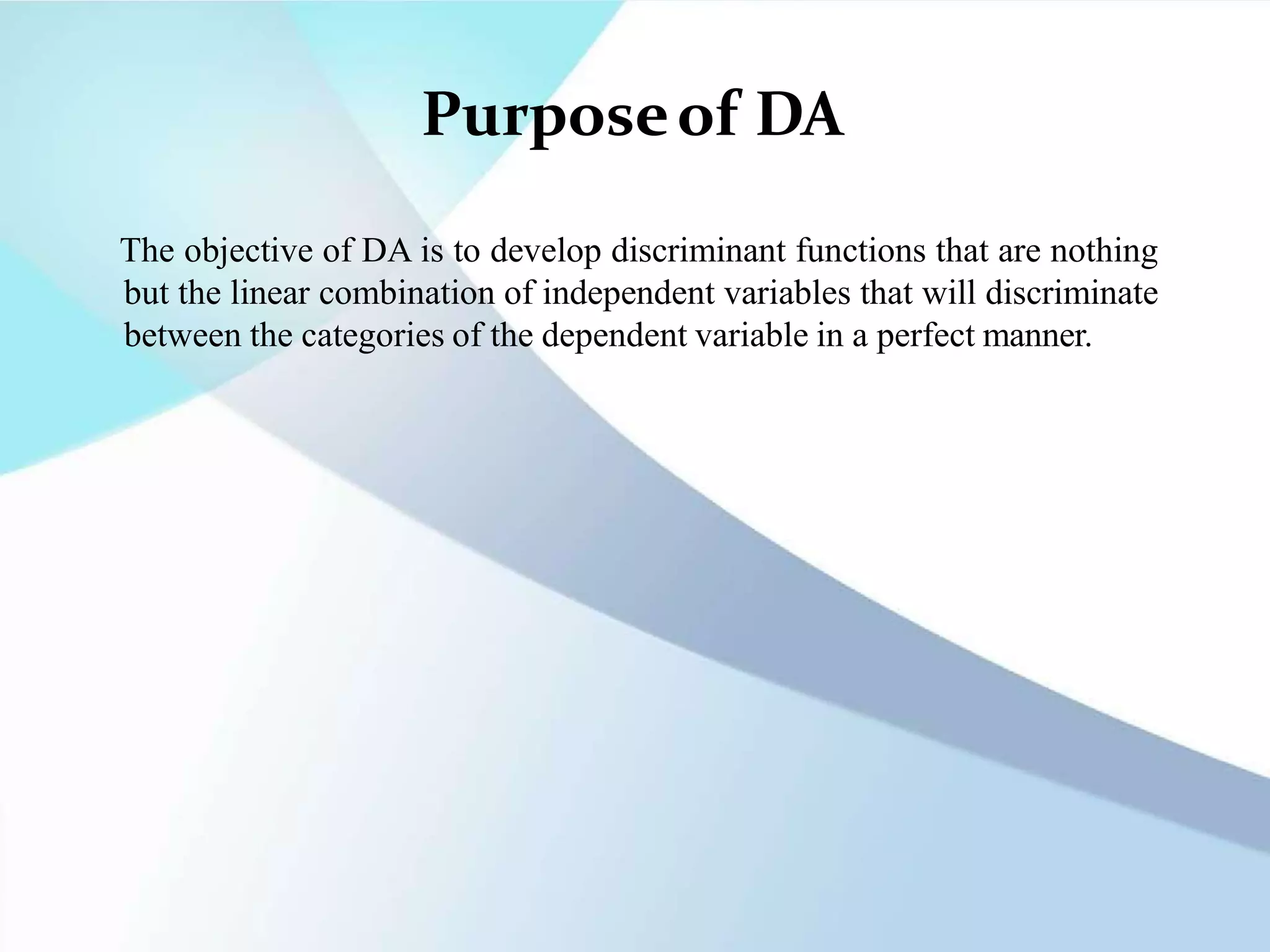
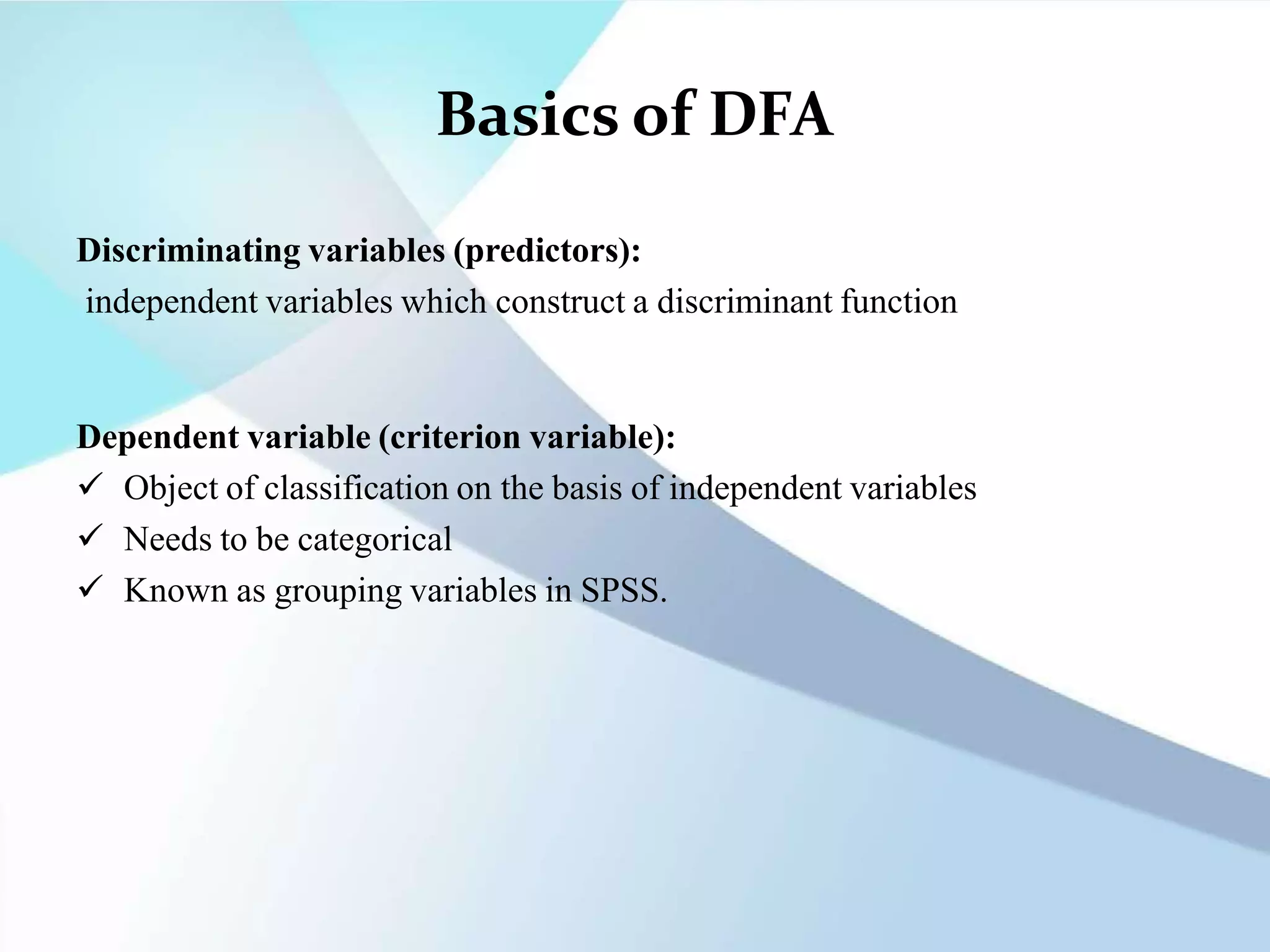
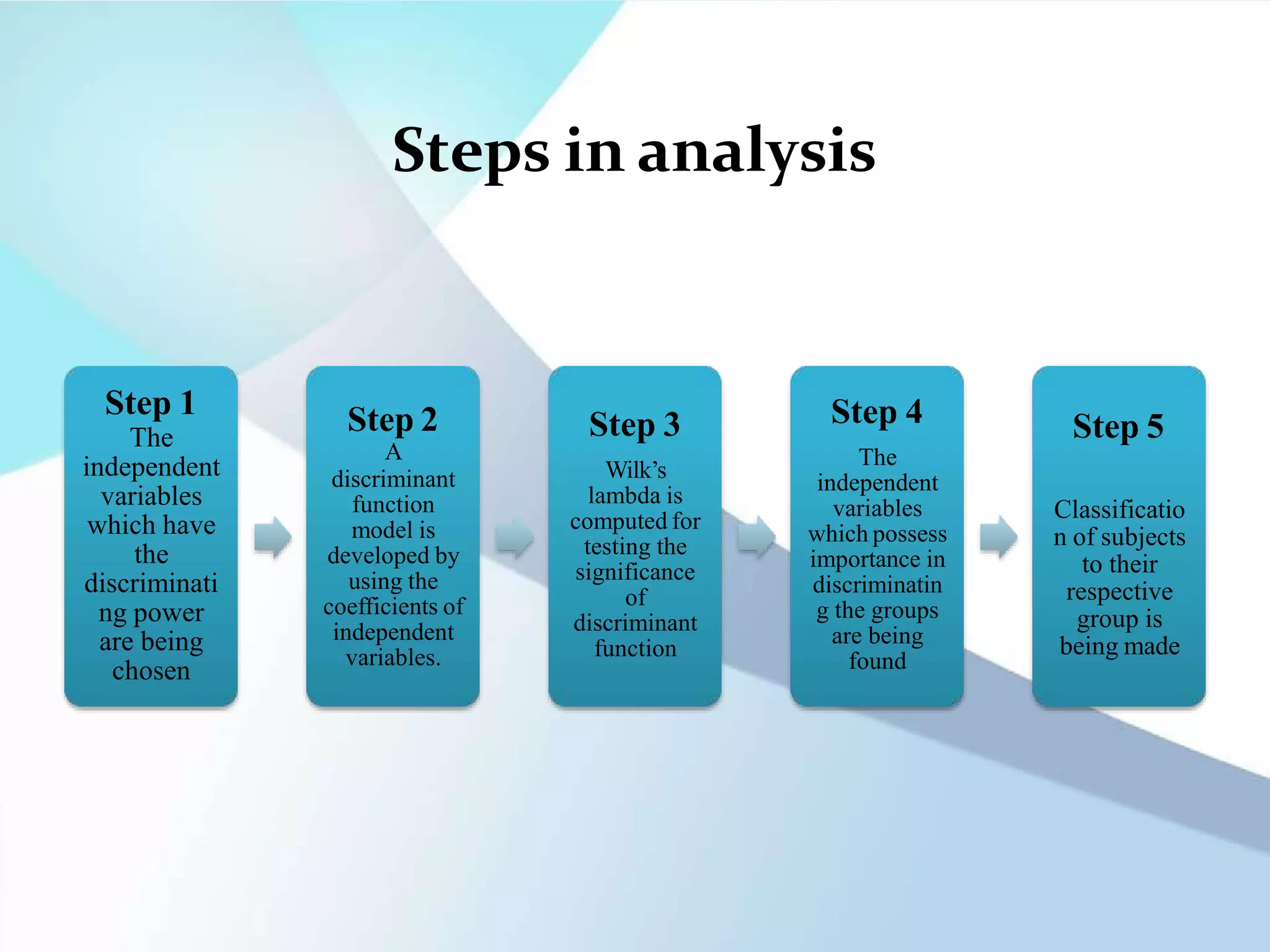
![DA in R programming
DFA (2 groups)
library(dplyr)
library(haven)
library(ggplot2)
mydat <- read_sav("C:/Users/cpflower/Dropbox (UNC
Charlotte)/RSCH8140/R/DFA/pope.sav")
View(mydat)
scatterplotMatrix(mydat[2:4])
install.packages("DFA.data")
library(DFA.data)
DFA(data=mydat, groups="gp", variables=c('wi', 'wc', 'pc'),
predictive=TRUE, prior='SIZES', verbose=TRUE)](https://image.slidesharecdn.com/rstudio-230403164848-2201243c/75/R-studio-pptx-10-2048.jpg)
